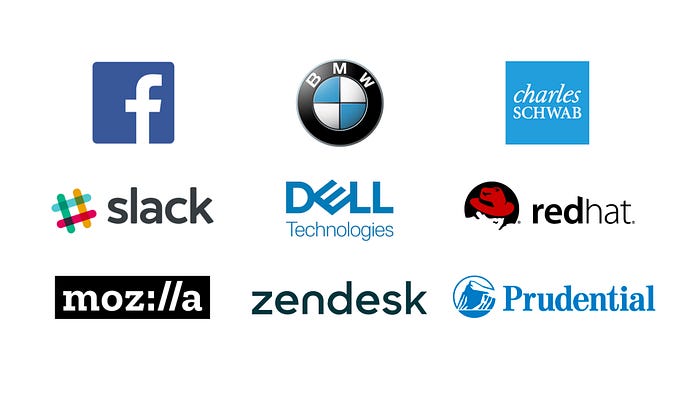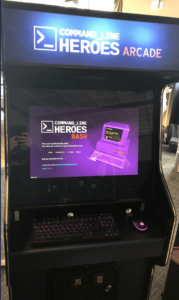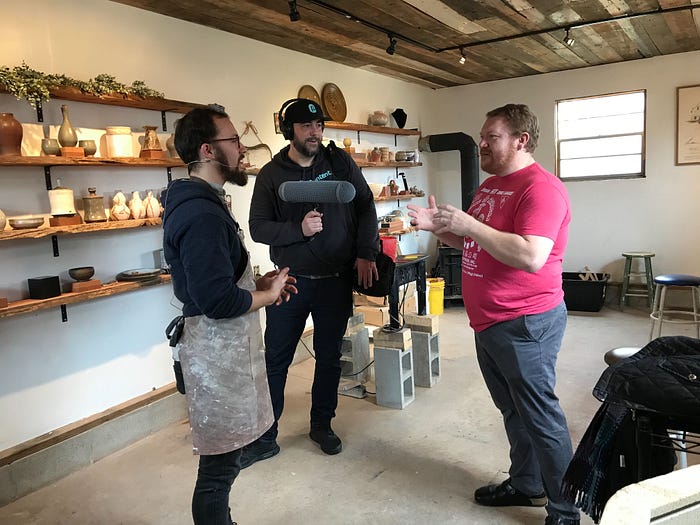Why Branded Content is Better Than Making Your Own Shows
This week, I spoke to two classes of university students about podcasting and what Pacific Content does and why.
In both classes, the students wanted to know why I left a career making shows in traditional media to work exclusively with brands. And they both asked how much I enjoy working with brands compared to making original shows inside a media company.
Here is the surprising answer: I like working with brands better.
Here is a not-so surprising admission: I never would have thought this was possible if I hadn’t done it.
Before starting Pacific Content, I spent over 10 years of my career at Canada’s public broadcaster, CBC. For the majority of my time there, I worked in a 100% commercial-free music network and I LOVED it. There was no goal other than to make great programming and grow passionate audiences. Revenue was never a consideration. It was a true dream job!
But…
The last 5 years at Pacific Content have been the most creatively engaging and stimulating work I’ve ever done. And today, I have moved completely to the other side of the fence. I love working with brands more than I loved making original shows.
Here’s why…
Creative Challenges
Every time we work with a new client, there is a fresh creative challenge. How do we translate our client’s business goals into an amazing, world-class podcast? Each client is different. Their target audience is different. Their business goal in making a podcast is different. Their success metrics are different.
Our job is to help each client solve these creative challenges. And the really fun part is not just that the challenges are different — each solution is different , too. They’re not always easy problems to solve, but I can’t think of a time when we weren’t able to come with a solution.
If you like solving problems with creativity, this is an amazing, engaging space.

New Collaborators
Every time we work with a new client, we get to meet a whole new group of people to collaborate with. They have different backgrounds than we do, they often live in a different city than we do, and they bring unique areas of expertise to the table.
We become one team together. And each team for each podcast is completely different and exciting. Having a variety of team structures, personalities, and talents in your day-to-day job is rare. It’s an amazing opportunity to learn new points of view, new skills, and to improve your own collaboration and teamwork skills.
Variety of Formats and Content
In earlier stages of my career, I spent a lot of time on music programming. I worked at CBC Radio 3, CBC Music, and MuchMusic. I LOVE music and I am so proud of the programming we made in all those teams.
The part I didn’t know I was missing, though, is variety. Not surprisingly, all the programming I worked on in those jobs was about music.
Today, we are producing shows about food and culture, the future of work, entrepreneurship, artificial intelligence, behavioural economics and decision-making, the world of open-source, solving tough problems with data, and the health of the internet. Every time we work with a new client, we get to tackle a new subject matter. I LOVE the variety.
Plus, inside most media companies, it’s relatively rare to have the opportunity to regularly work on new projects from the ground up. There are a finite number of shows that fit into a broadcast schedule and open slots don’t come up for grabs very often. Working with brands, though, we are almost always working on new shows. It’s a creator’s dream to have so many opportunities to create new shows.
Finally, there are a limited number of formats in other media. There isn’t radical change happening in the formats of broadcast TV, terrestrial radio, or in newspapers. That’s because they know what works and it’s still working well. TV shows are still 30 minutes or an hour, sitcoms are sitcoms, dramas are dramas, morning shows are morning shows, local news is local news, etc.
In podcasting, though, it’s still early days. There is SO much experimentation happening. All the best practices haven’t yet been figured out yet. So being able to help invent the future of a medium feels like a once-in-a-lifetime opportunity.
All this variety👆? Massively creatively invigorating.
Building Audiences
When you work at a media company as a creator, one of the things you almost never have to worry about is building an audience. The media company already has a large audience and if you make a great new show, that audience will watch or listen.
When you’re making a podcast with a new client, though, everyone starts at ZERO. ZERO downloads, ZERO subscribers. So as a podcasting company, we’ve had to spend a lot of time and be really strategic and creative when it comes to building audiences for new shows.

This would, at first, seem like a downside to our business. However, we’ve come to the realization that every element of a show pertains to audience development. The format, the content, the guests, the podcast artwork, the show description, the marketing… every single choice about your show is also an audience development choice. It is yet another really enjoyable creative challenge to work on all elements of the show in a holistic way.
Also, as we’ve written about before, brands bring some serious super powers to the table when it comes to building audiences. It’s hard to describe how much fun it is working with clients to discover their super powers and activate them. It’s also a lot of fun when those super powers end up delivering major results for our clients and their podcasts.
Today, audience development is one of the biggest areas of expertise in our business. It is also, for me personally, the most engaging area of our business.
Learning
With the variety of shows we make and the variety of clients we work with, the thing I love the most about my job today is how much I am constantly learning. I get exposed to new ideas and new ways of thinking every time we get plugged into a different industry, a different company, a different team, or a different business model.
I also learn all sorts of new information and ideas while we make the editorial content for the shows. There is so much useful information in every episode of every show we produce, and we’re often talking to renowned experts in their fields in any given episode. We regularly get to talk with people that you would never have a chance to meet in real life and it’s a privilege.
And as a business owner, I’m constantly learning about how to better solve business problems through content, how to build audience more effectively with brands, how to work most effectively with agencies, and more.
Learning also comes from projects that don’t work as well as we’d hoped, or problems we haven’t encountered before, or deliverables we’ve never had to deliver before. It’s not always easy — in fact, sometimes it’s REALLY hard — but we are never not learning.
Working with brands is like being in the most interesting business school of all time.
Brands ARE Media Companies… and Media Companies ARE Brands
There has always been a perception that making original shows inside a media company has more freedom of creative expression and that branded content has too many constraints.

What’s become clear to me is that in many cases, working with a great brand is not all that different than working with a media company. A media company has a strong voice and and a clear set of values. And most of the programming for any media company fits inside the same sort of parameters that marketing for a non-media brand would have.
For example, there is distinct sound and target audience for public radio. You can tell when a show comes from CBC or NPR or BBC because of the sound and the voice. In the same way, you can tell what a CNN show or a FOX News show looks and sounds like because they have a brand voice and a clear target audience.
It’s the same with brands. They have a strong voice, they have a set of values, and they have a defined audience that they would like to reach with their programming.
B is for Branded? Not Anymore
In many media companies, there is a split between those who make original programming and those who make branded content.
Mostly, the perception is that the A-Team — all the best creative minds — work on the original programming, while the B-Team does the branded work.
Not anymore. I can say with 100% certainty that we have nothing but A-Team members working with brands at Pacific Content.

By embracing the creative challenges, the diversity of programming, and the learning you can do by working with great brands, we are working in an environment ripe for world-class talent to do their best work. I feel so lucky to have the passion, talent, and creativity on our team — every one of one them took a big risk to move into this space with us. And they all bring amazing attitudes and creativity to the table when we have to solve the toughest of our problems and challenges.
Here’s the real proof, though — no one has ever quit Pacific Content (knock on wood). And we wouldn’t be able to hire and keep such a phenomenal A-Team if working with brands on original podcasts wasn’t creatively rewarding and stimulating.
The End Goal is the Same
Whether you are working on original shows at a media company or original shows with a brand, you have to do the same things to find success. You have to make shows so good that when people sample them, they want more. You have to be so good that you create fans.
The bar is even higher with brands, because some audiences are skeptical that a brand would make something that isn’t an infomercial.
As a content creator, is there any more compelling challenge than a regular opportunity to work with new and diverse teams to make the best possible shows?
A Prediction
So there you have it. LOTS of reasons why working with brand is so rewarding on so many levels.
I’ll close with one (maybe not so surprising) prediction:
With the combination of A-Team talent, bold visions, and unique approaches to formats and audience development, one of your next favorite podcasts is going to come from a brand instead of a media company.
Sign up for the Pacific Content Newsletter: audio strategy, analysis, and insight in your inbox. Once a week.
